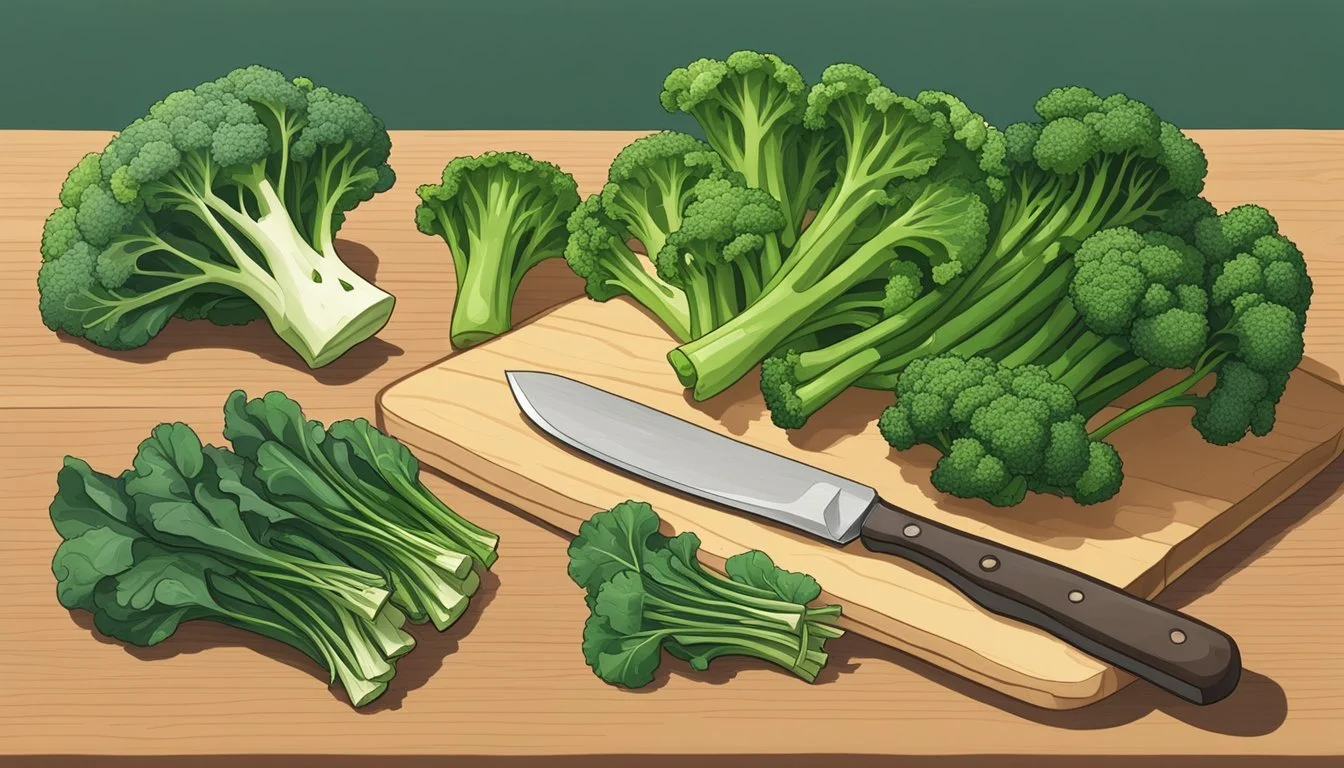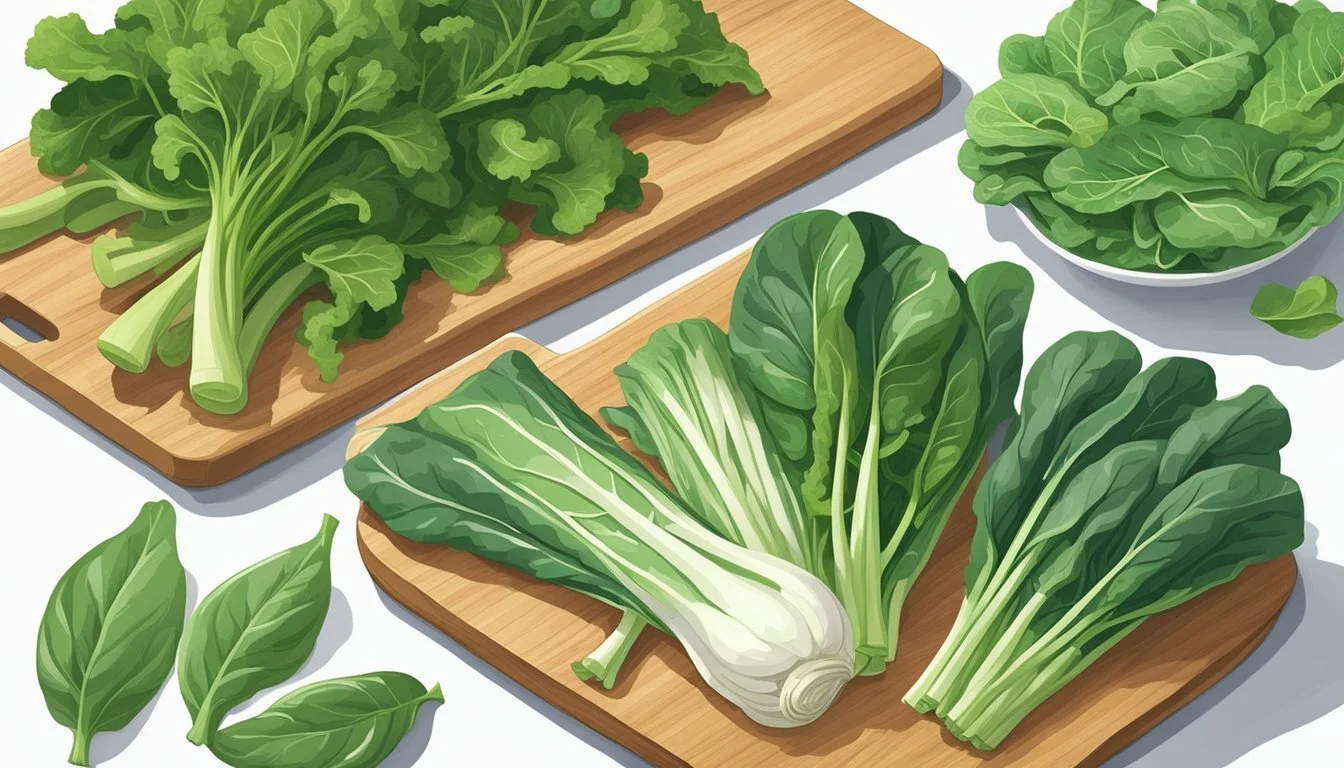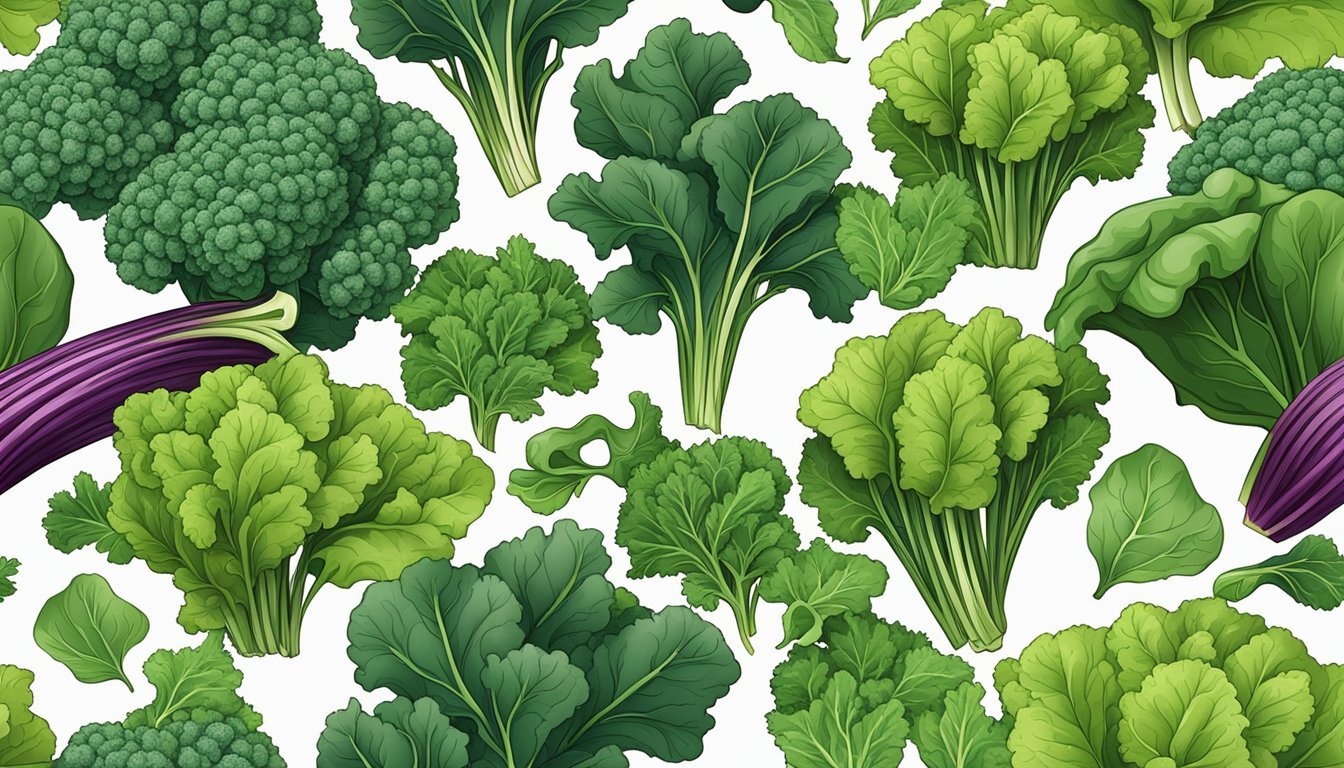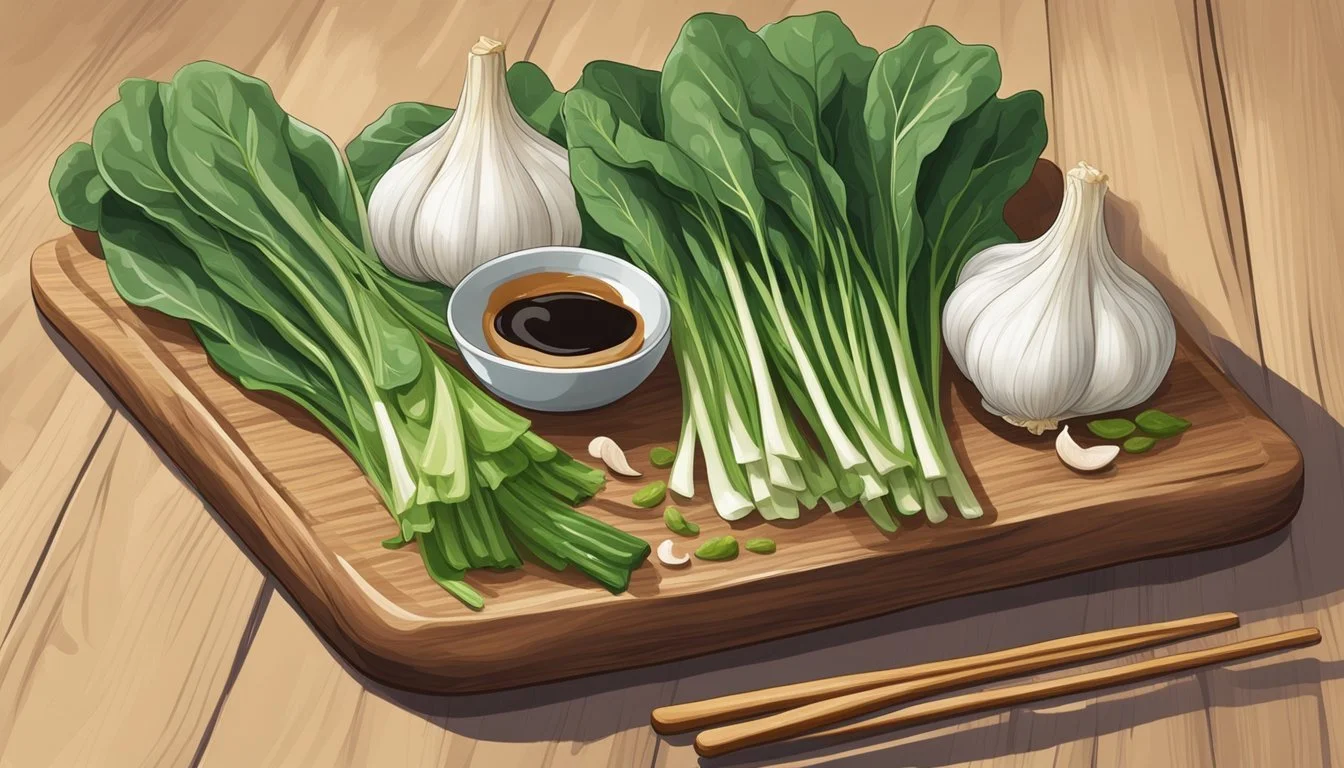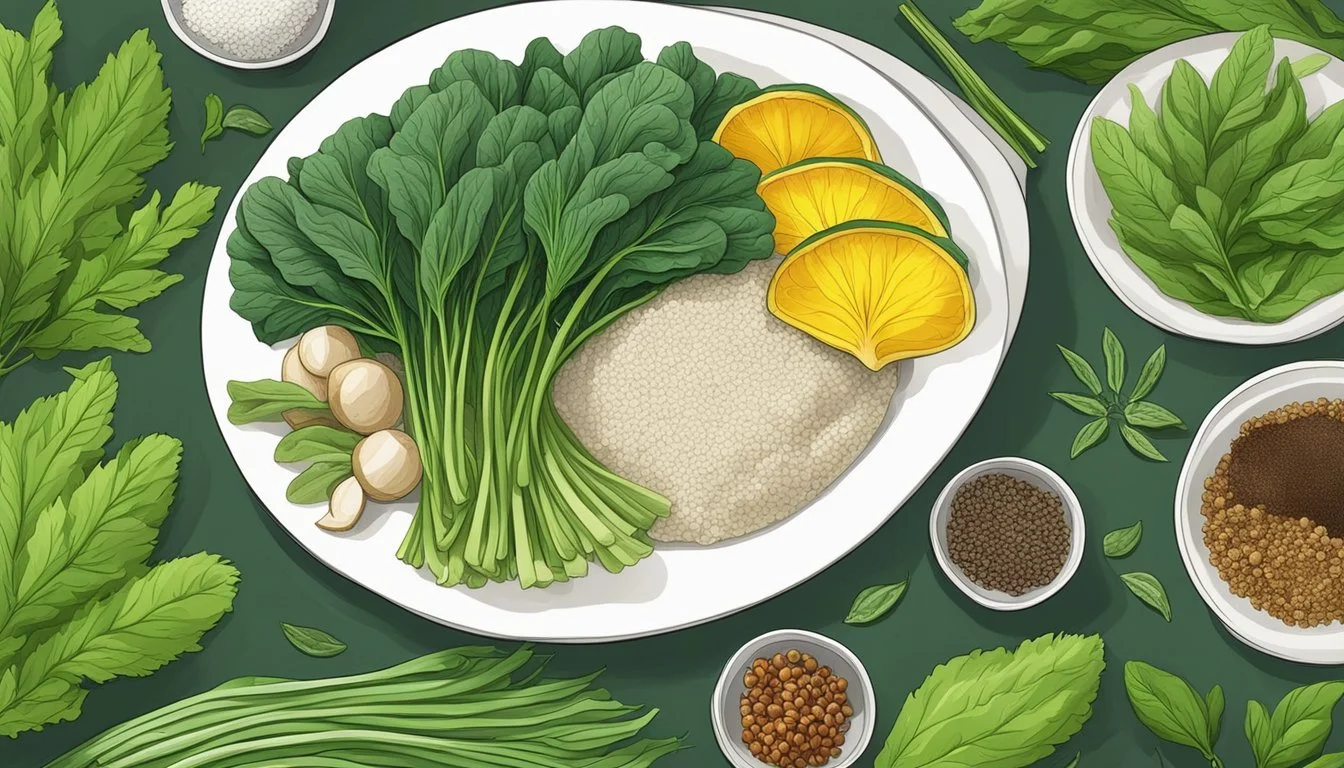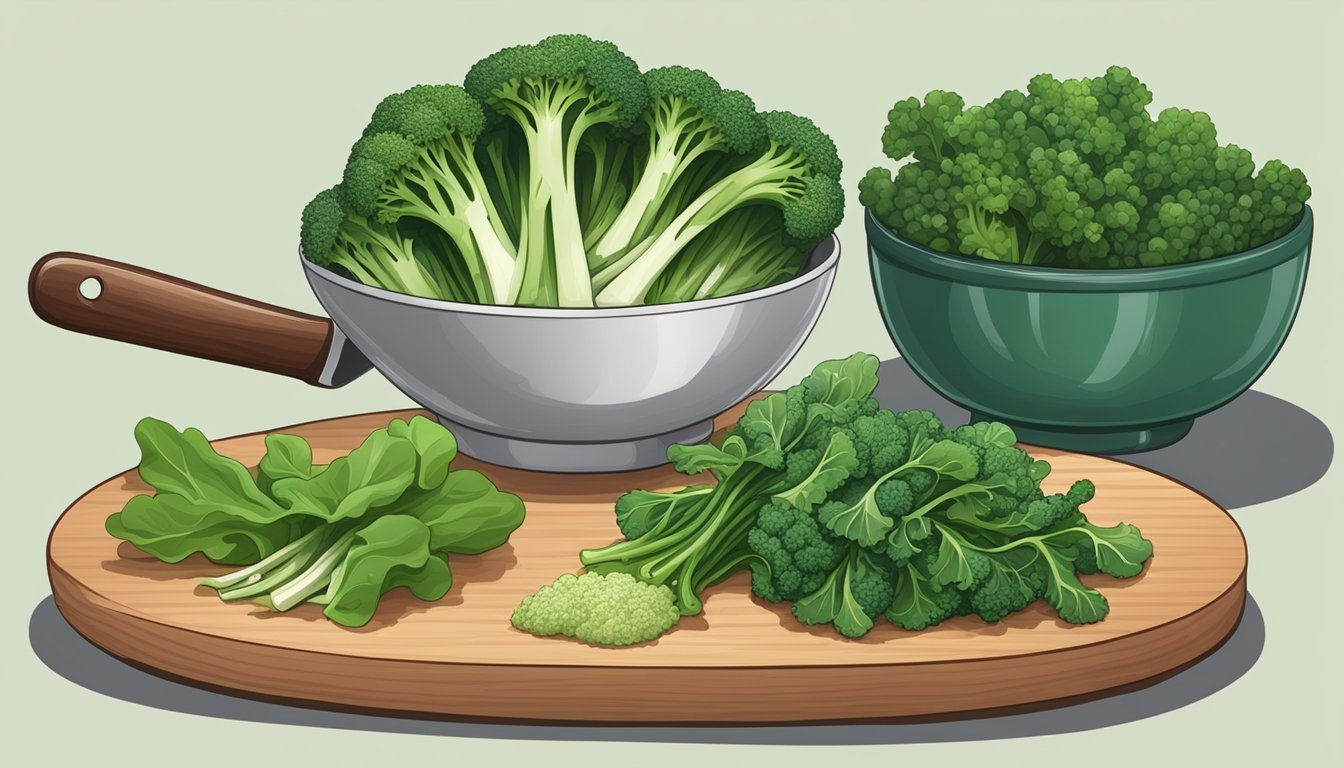Gai lan Substitutes
Best Alternatives for Chinese Broccoli
Gai lan, also known as Chinese broccoli, is a staple in many Asian cuisines, known for its slightly bitter taste and crunchy texture. However, it can be challenging to find in some regions, or you might simply want to try something different. To replace gai lan in your next dish, the best options include broccoli rabe, choy sum, and broccolini, which offer similar textures and flavors.
Other substitutes such as collard greens, bok choy, and kale are also excellent choices when Gai lan is unavailable. These alternatives can seamlessly fit into stir-fries, soups, and noodle dishes, providing a similar nutritional boost and culinary experience.
Experimenting with substitutes like yu choy, asparagus, and mustard greens can also add a new dimension to your dishes. Each of these vegetables brings unique flavors and textures, ensuring that your meals remain vibrant and delicious without the need to track down Chinese broccoli.
Understanding Gai Lan
Gai lan, also known as Chinese broccoli, is a leafy green vegetable that is widely used in Asian cuisines. It belongs to the Brassica oleracea species and is prized for its nutrient-rich content.
Botanical Profile
Gai lan, also referred to as kai-lan or Chinese kale, is a member of the Brassica oleracea family. This family also includes other vegetables like broccoli, cauliflower, and kale. Gai lan is characterized by its dark green leaves, thick stems, and small florets.
The vegetable has a slightly bitter taste that mellows when cooked. It can be prepared in various ways, including stir-frying, steaming, and boiling. Gai lan is often used in soups, noodle dishes, and as a side vegetable.
Nutritional Value
Gai lan is packed with a variety of essential vitamins and minerals. It is an excellent source of vitamins A, C, and K. In addition to vitamins, gai lan is rich in dietary fiber, which aids in digestion.
The vegetable also contains significant amounts of minerals such as calcium, potassium, and iron. Antioxidants present in gai lan help combat free radicals in the body. Including gai lan in the diet can contribute to improved overall health due to its rich nutritional profile.
Common Gai Lan Substitutes
Several vegetables can replace gai lan in a variety of dishes. These substitutes range from broccolini to broccoli rabe, each bringing their own unique textures and flavors.
Broccolini
Broccolini is a popular substitute for gai lan due to its similar appearance and texture. It features slender stalks and small, tender florets that are perfect for stir-frying, steaming, or sauteing. Broccolini has a milder flavor compared to gai lan, making it suitable for those who prefer a less bitter taste.
In terms of nutrition, broccolini is rich in vitamins A, C, and K, as well as iron and calcium. It also contains dietary fiber, promoting digestive health. It's versatile and can be used in a variety of recipes that call for gai lan.
Broccoli
Broccoli is another common substitute for gai lan, especially the tender stalks and small florets. While the taste is slightly different, broccoli can be used in similar cooking methods such as stir-frying, steaming, or boiling. It has a slightly sweeter and less bitter taste, making it appealing in both soups and salads.
Nutritious and versatile, broccoli is high in vitamin C, vitamin K, and folate. It also contains a good amount of fiber and antioxidants. This makes broccoli an excellent choice for those looking to maintain a healthy diet while enjoying similar textures found in gai lan.
Broccoli Rabe
Broccoli rabe, also known as rapini, is favored for its bitter flavor which closely matches that of gai lan. This leafy green vegetable comes with small, spiky florets and thin, crunchy stalks. It can be quickly sautéed, blanched, or added to soups and stews, providing a more pronounced flavor profile.
From a nutritional standpoint, broccoli rabe is packed with vitamins A, C, and K, as well as folate and calcium. Its strong, peppery taste and high nutrient content make it a suitable and nutritious replacement for gai lan in various dishes.
Leafy Green Alternatives
In place of gai lan, several leafy greens can serve as excellent substitutes, each bringing its own distinct flavor and texture to the dish. These alternatives offer a nutritious and versatile option that can be easily incorporated into various recipes.
Kale and Its Varieties
Kale is a robust leafy green known for its slightly bitter taste and sturdy texture. It is available in several varieties, including curly kale, Tuscan kale, and red Russian kale. Although kale isn't traditionally used in Asian cuisines, its toughness stands up well to sautéing and stir-frying, making it a great substitute. Kale is rich in vitamins A, C, and K, as well as minerals like calcium and iron, providing substantial health benefits. To balance its stronger flavor, combining kale with ingredients like garlic, ginger, or soy sauce can enhance the overall dish.
Bok Choy
Bok choy, also known as Chinese cabbage, is a staple in Asian cooking. It has tender leafy greens and crunchy white stalks, offering a nice contrast in texture. Baby bok choy and regular bok choy are both suitable, depending on the recipe. Bok choy is mild in flavor, slightly sweet, and absorbs the flavors of sauces and spices well. It's packed with vitamins A, C, and K along with folate and fiber. Bok choy is ideal for quick stir-fries, soups, and braised dishes. When substituting for gai lan, ensure the bok choy is cooked just until tender to preserve its crisp texture.
Spinach
Spinach is a widely available leafy green that can be used in place of gai lan in many dishes. Spinach has a softer texture and milder taste compared to gai lan, making it versatile. It's rich in iron, magnesium, and vitamins A, C, and K. Baby spinach leaves are more tender and can be used raw in salads or lightly cooked. Mature spinach holds up better in cooked dishes like stir-fries and soups. Spinach cooks down considerably, so it's best added towards the end of the cooking process to avoid over-wilting.
Each of these leafy greens offers a unique combination of flavors and nutritional benefits, making them excellent substitutes in various recipes where gai lan would traditionally be used. Consider the desired texture and taste profile of your dish when choosing the most suitable alternative.
Cooking with Substitutes
Proper preparation and cooking techniques are essential for achieving delicious results when substituting for gai lan. These tips ensure substitutes retain their best texture and taste.
Preparing the Greens
Broccoli rabe, bok choy, and collard greens each have unique preparation needs. Start by washing the greens thoroughly to remove any dirt.
For broccoli rabe, trim the tough ends and cut into manageable pieces. Bok choy requires trimming the ends and cutting the stalks into bite-sized pieces. With collard greens, remove the central stem and chop the leaves.
Consider blanching the greens in boiling water for a few minutes to soften them. This makes them more tender and reduces cooking time.
Cooking Techniques
Stir-frying is a popular method. Heat oil in a pan and add garlic and ginger for flavor. Add the greens and cook for a few minutes until tender but still crisp.
For a more delicate texture, steaming is an excellent choice. Steam the greens for about 3-5 minutes and finish with soy sauce or oyster sauce.
Sautéing in a pan with a little oil can enhance the natural flavors. Add a pinch of sugar to balance bitter greens like broccoli rabe. For a flavorful twist, try adding a lightly boiled egg to stir-fried greens.
Use creativity to adapt these methods and enjoy your substituted greens with their best taste and texture.
Substitutes by Cuisine
Different cuisines offer various substitutes for gai lan, ensuring that the essence of your dish remains intact. Explore alternatives rooted in Mediterranean and Asian culinary traditions.
Mediterranean Influences
In Mediterranean cuisine, vegetables like asparagus, broccolini, and Brussels sprouts are excellent substitutes for gai lan. Asparagus offers a tender yet crisp texture, making it suitable for grilling or roasting with Italian herbs.
Broccolini, a hybrid of broccoli and gai lan, shares a similar structure with tender stems and small florets. It can be sautéed with garlic and olive oil for a simple yet flavorful dish compatible with Mediterranean-style pork recipes.
Brussels sprouts bring a different dimension with their compact and crunchy leaves. Sliced and roasted, they absorb flavors well, fitting seamlessly into Mediterranean dishes involving lemon and herbs.
Asian Variations
Asian cuisine, particularly Chinese and Vietnamese, provides several substitutes. Broccoli rabe (rapini) features a similar texture to gai lan with its bitter leaves and crunchy stalks. It works well in stir-fries, absorbing sauces and seasonings efficiently.
Bok choy is another versatile option, thriving in soups, noodle dishes, and sautés. Its mild flavor pairs well with a variety of Asian sauces, maintaining the dish's integrity.
Additionally, choy sum and mustard greens are valuable alternatives. Choy sum, with its tender leaves and sweet stems, is ideal for steaming and stir-frying. Mustard greens' sharp flavor adds a spicy note to dishes, making them suitable for robust-flavored recipes.
Taste and Flavor Profiles
The taste and flavor profiles of substitutes for gai lan are critical for ensuring success in various recipes. Key factors include the level of bitterness and how well each substitute blends with common seasonings.
Bitter Greens Consideration
Bitter greens play an important role in many cuisines, including those that use gai lan. Broccoli rabe and mustard greens both share a slightly bitter taste, comparable to gai lan. Broccolini, on the other hand, is a milder option with a sweeter undertone, suitable for those sensitive to strong bitter flavors.
Kale has a stronger and more robust bitterness, which can dominate a dish if not balanced properly. Yu Choy offers a mild bitterness with a hint of sweetness. For those seeking minimal bitterness, bok choy is a safer choice, with a gently savory flavor, making it versatile in different dishes.
Aroma and Seasoning Compatibility
The aroma and seasoning compatibility of gai lan substitutes are crucial for authentic-tasting dishes. Broccoli rabe exhibits a slightly earthy aroma that pairs well with garlic and chili, enhancing its peppery notes. Mustard greens add a spicy, peppery scent, complementing ginger and soy-based sauces effectively.
Broccolini's subtle aroma works best with mild seasoning, letting its natural sweetness shine. Yu Choy, with its delicate fragrance, absorbs flavors such as oyster sauce and sesame oil seamlessly. Kale’s robust profile requires stronger seasonings like balsamic vinegar or smoked paprika to balance its bitterness. Bok choy, due to its neutral aroma, blends well with a variety of seasonings, making it exceptionally versatile.
Culinary Tips for Gai Lan Substitutes
Selecting and storing alternatives to gai lan, such as broccoli rabe and broccolini, require careful consideration of their unique flavors and textures. Enhancing these substitutes with complementary ingredients can drastically improve your culinary results.
Selection and Storage
When choosing substitutes like broccoli rabe or choy sum, look for vibrant green leaves and firm stalks. This ensures freshness and a satisfying crunch similar to gai lan. Avoid wilted or yellowing leaves as they indicate age and possible nutrient loss.
Store these vegetables in a perforated plastic bag in the refrigerator's crisper drawer. Proper storage can maintain their texture and nutrition facts, often retaining key vitamins and minerals. Use within a week to enjoy optimal taste and nutritional benefits.
Broccolini and bok choy, also effective substitutes, should be similarly selected with crisp stems and fresh leaves. For broccolini, trim the ends before storing to extend freshness. These practices help maintain the vegetable's slightly sweet and less bitter taste.
Enhancing Flavors
Cooking with substitutes offers various ways to enhance their unique flavors. Incorporate ingredients like garlic and ginger which complement the bitterness of broccoli rabe. Sautéing with garlic not only adds depth but also balances the vegetable's peppery notes.
Using sauces such as oyster sauce can add umami and richness to dishes using bok choy or mustard greens. In Italian cuisine, a squeeze of lemon and a dash of olive oil can enhance broccolini's delicate sweetness.
Pair these vegetables with proteins like beef or chicken, integrating them into stir-fries or soups. For an Asian-inspired twist, cook them with soy sauce and a splash of sesame oil. Combining them with eggs can create balanced and nutritious meals.

